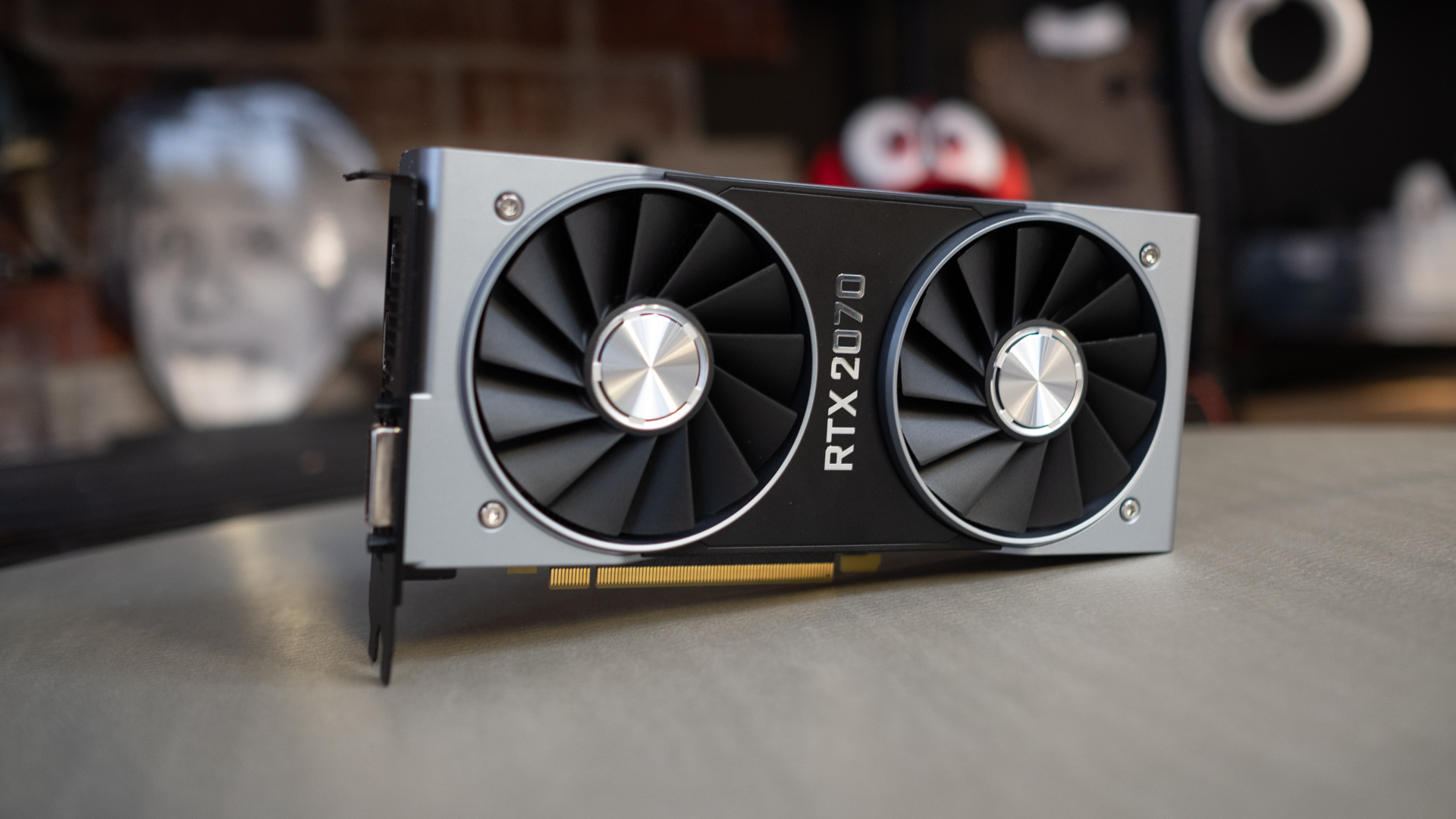TechRadar Verdict
Without mind-blowing performance or any actual ray tracing-enabled games, there aren’t enough reasons to spend this much on a Nvidia RTX 2070 yet.
Pros
- +
Playable 4K gaming across a variety of titles
- +
Impressive synthetic performance
- +
Surprisingly lower energy consumption
Cons
- -
Expensive for a ‘mid-range’ GPU
- -
RTX and DLSS-enabled games still not out yet
- -
No SLI option
Why you can trust TechRadar
Just like the xx70 cards before it, the Nvidia GeForce RTX 2070 stands firmly in that middle ground to give you quite a bit of performance for a bit less than the price of Nvidia’s flagship. It splits the difference between value and performance in the Turing series of graphics cards. So, while the GeForce RTX 2080 and RTX 2080 Ti both deliver outstanding performance, it’s the RTX 2070 that delivers more value to most consumers.
Essentially, the Nvidia GeForce RTX 2070 knocks off a little of that premium price without sacrificing too much of its ray-tracing capabilities. And having tested the GPU, we know this for a fact. Overclockers will especially be able to squeeze some extra horsepower out of this Turing GPU.
Even with the release of both AMD Navi and the Nvidia GeForce RTX 2070 Super, as well as the impending release of RTX 3070, which costs much less for faster performance, the Nvidia GeForce RTX 2070 is still worth looking into if you can find it. In fact, the retailers still stocking the card will probably knock the price down even more with the RTX 3000 line unveiling at the company's September 1 event.

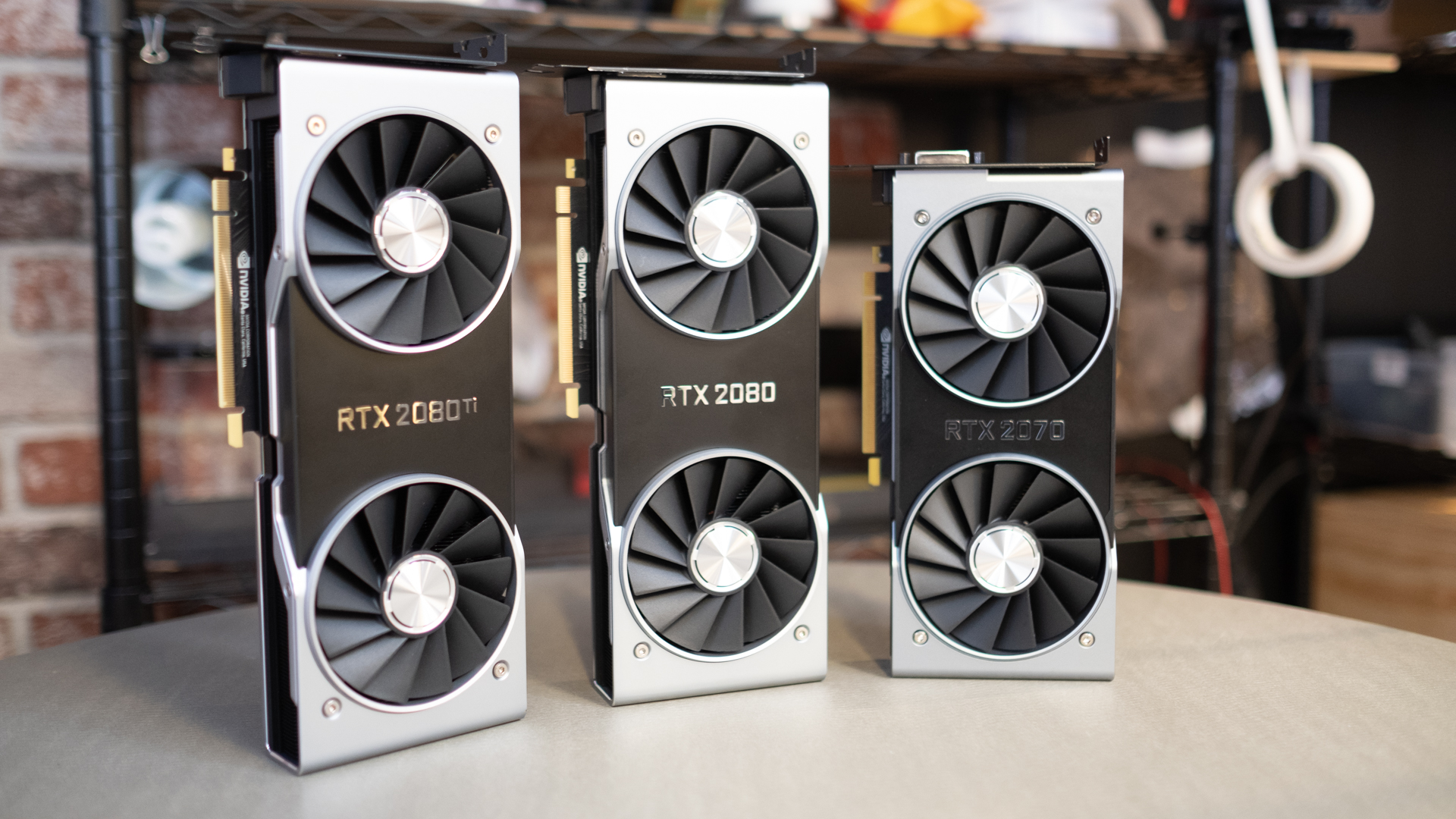
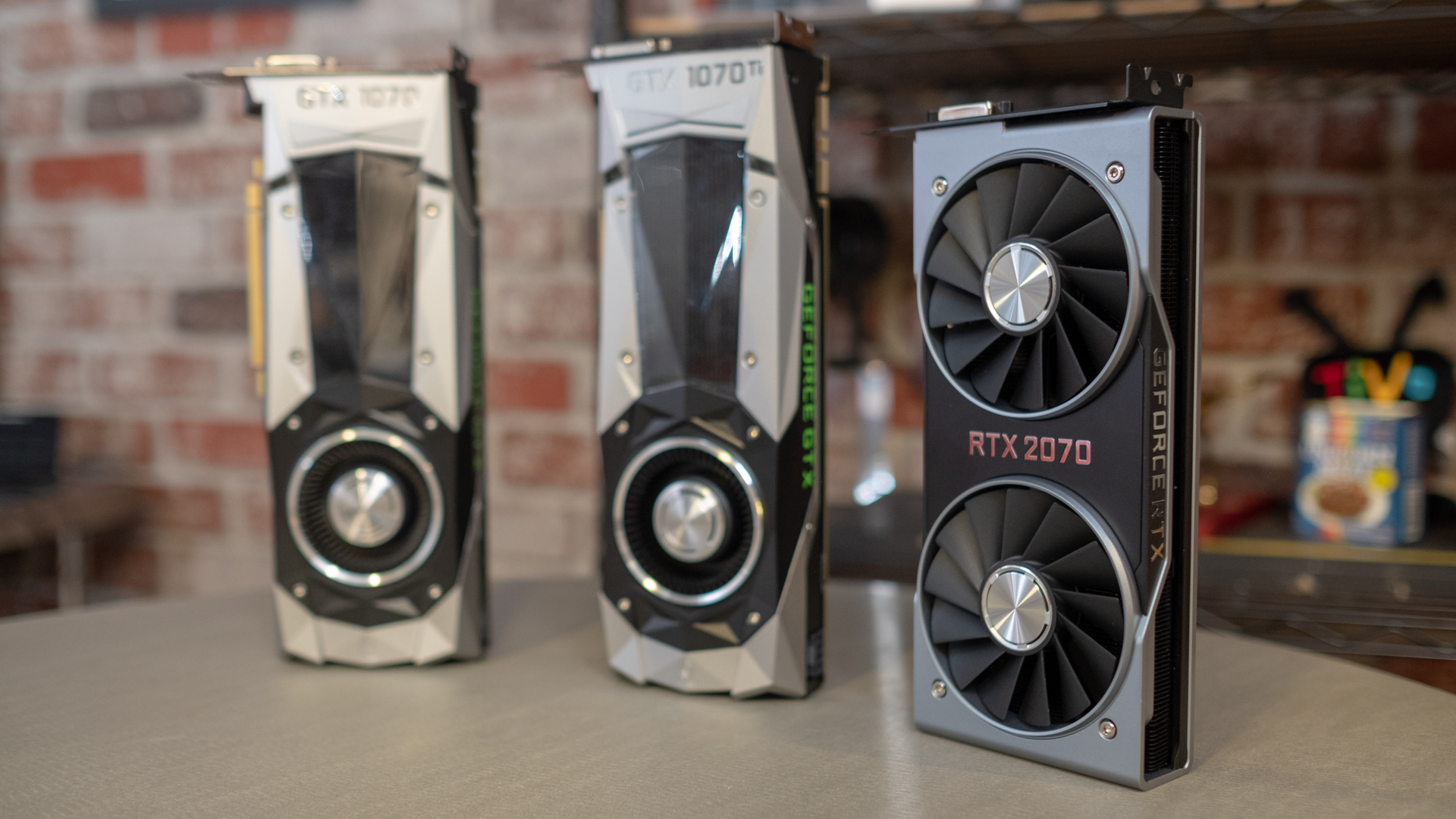
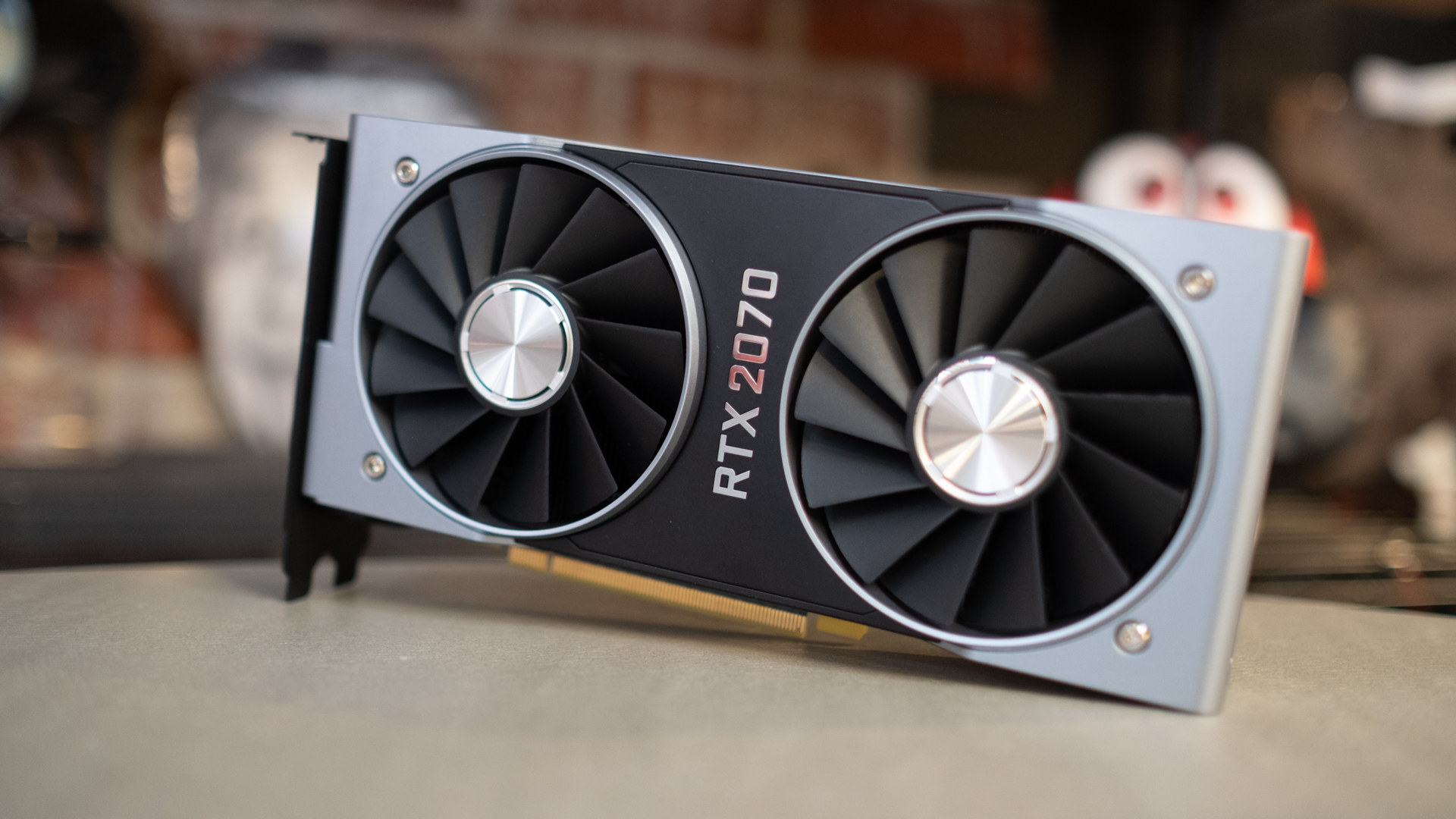
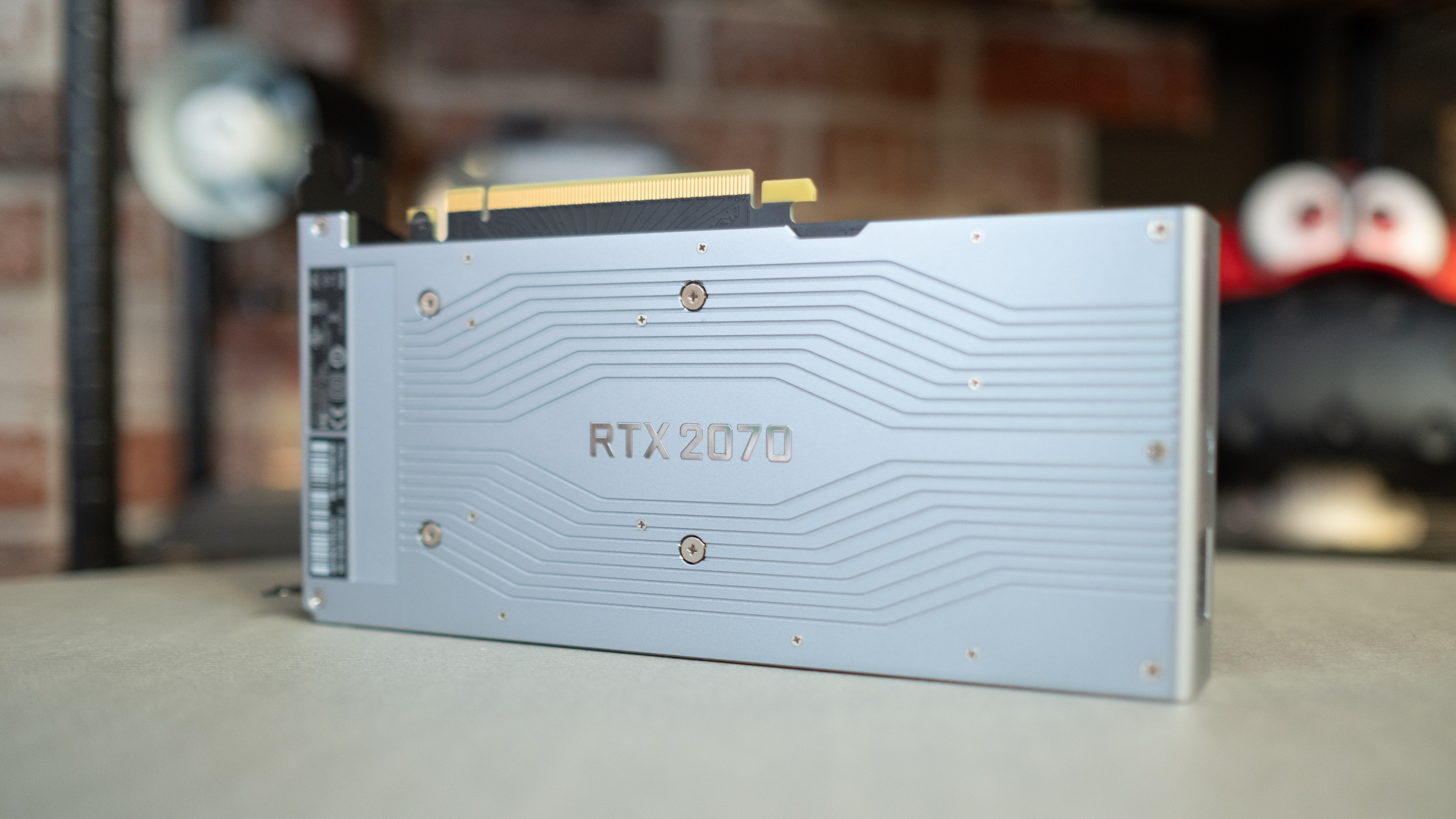
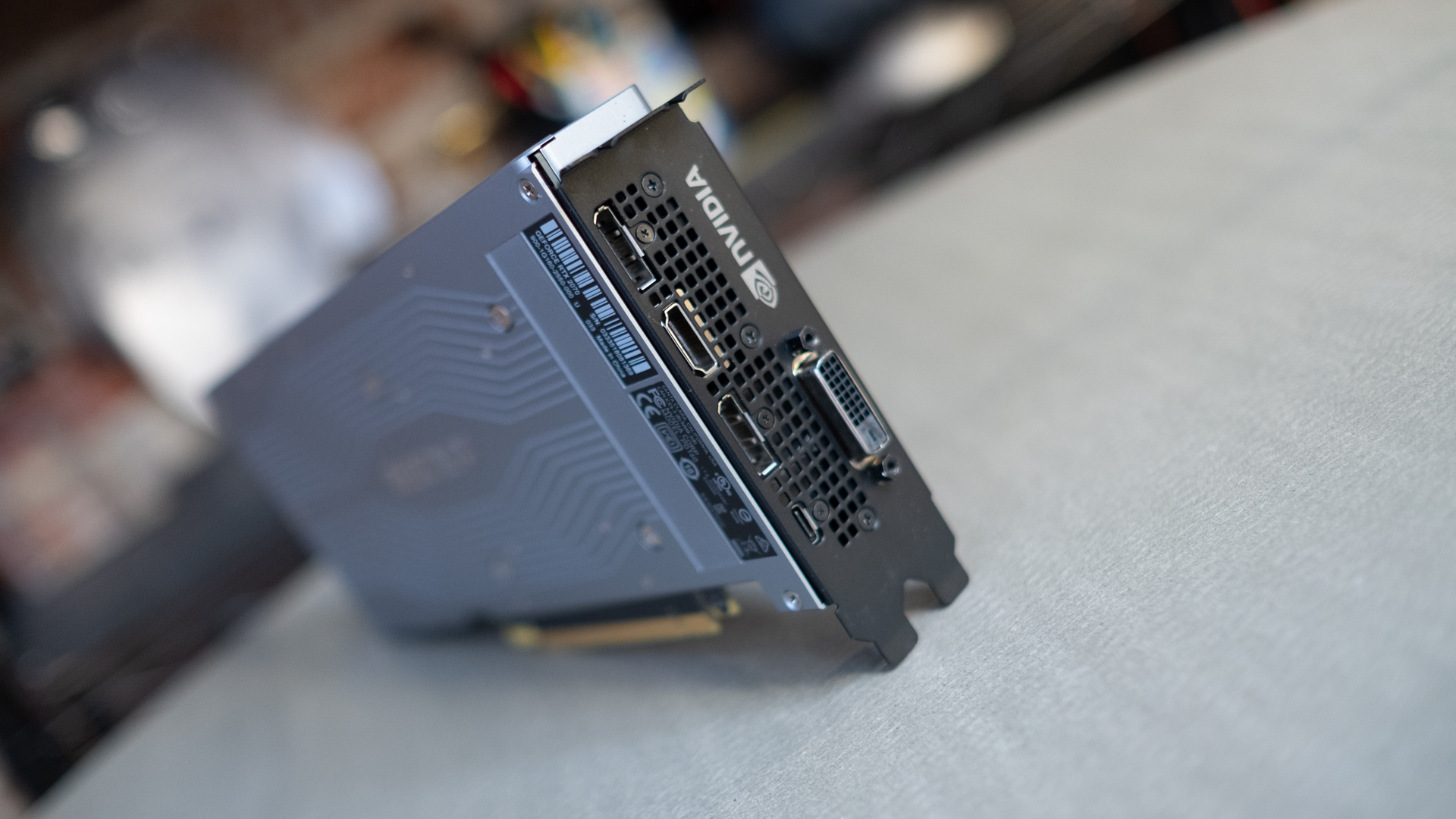
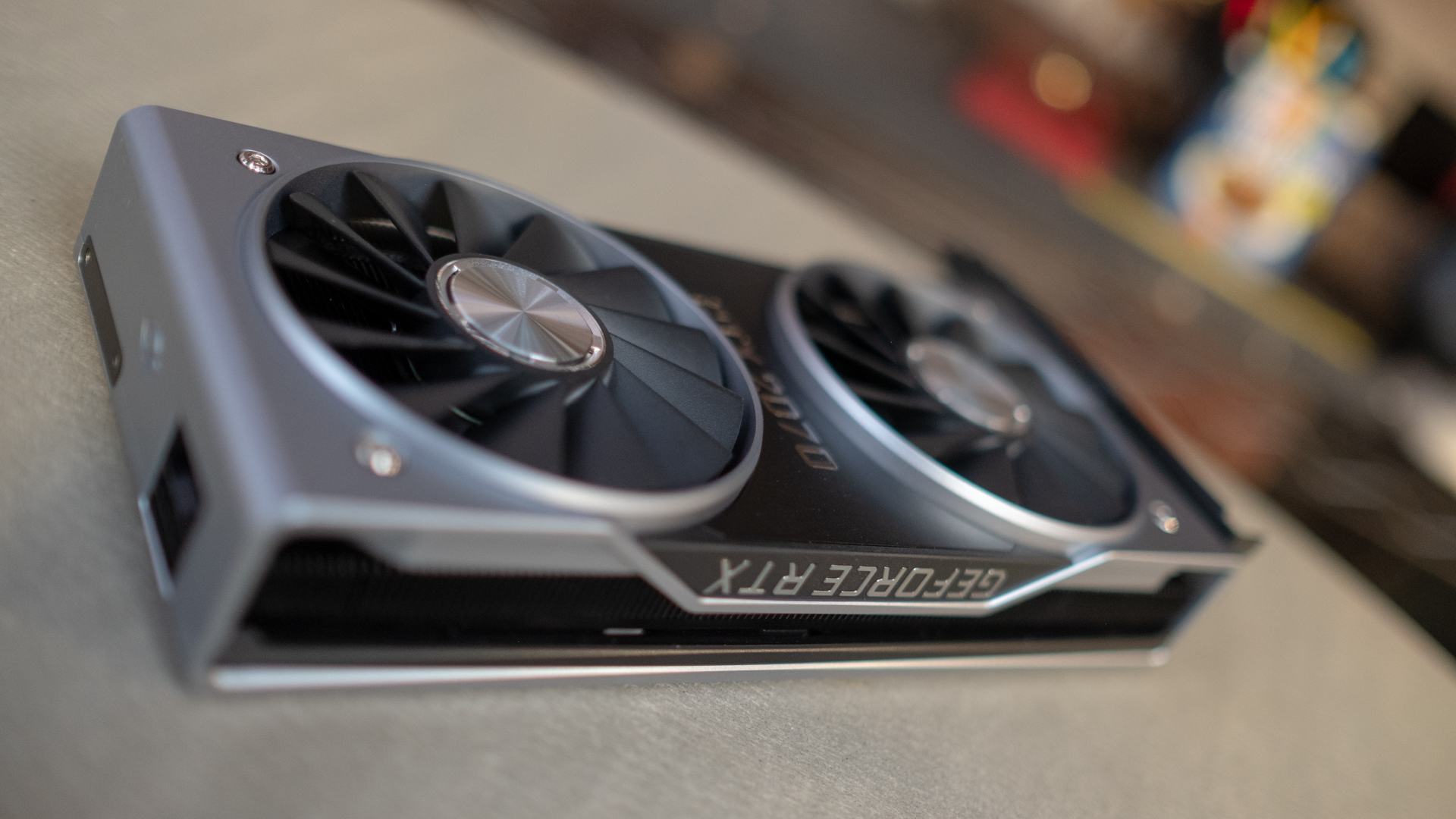
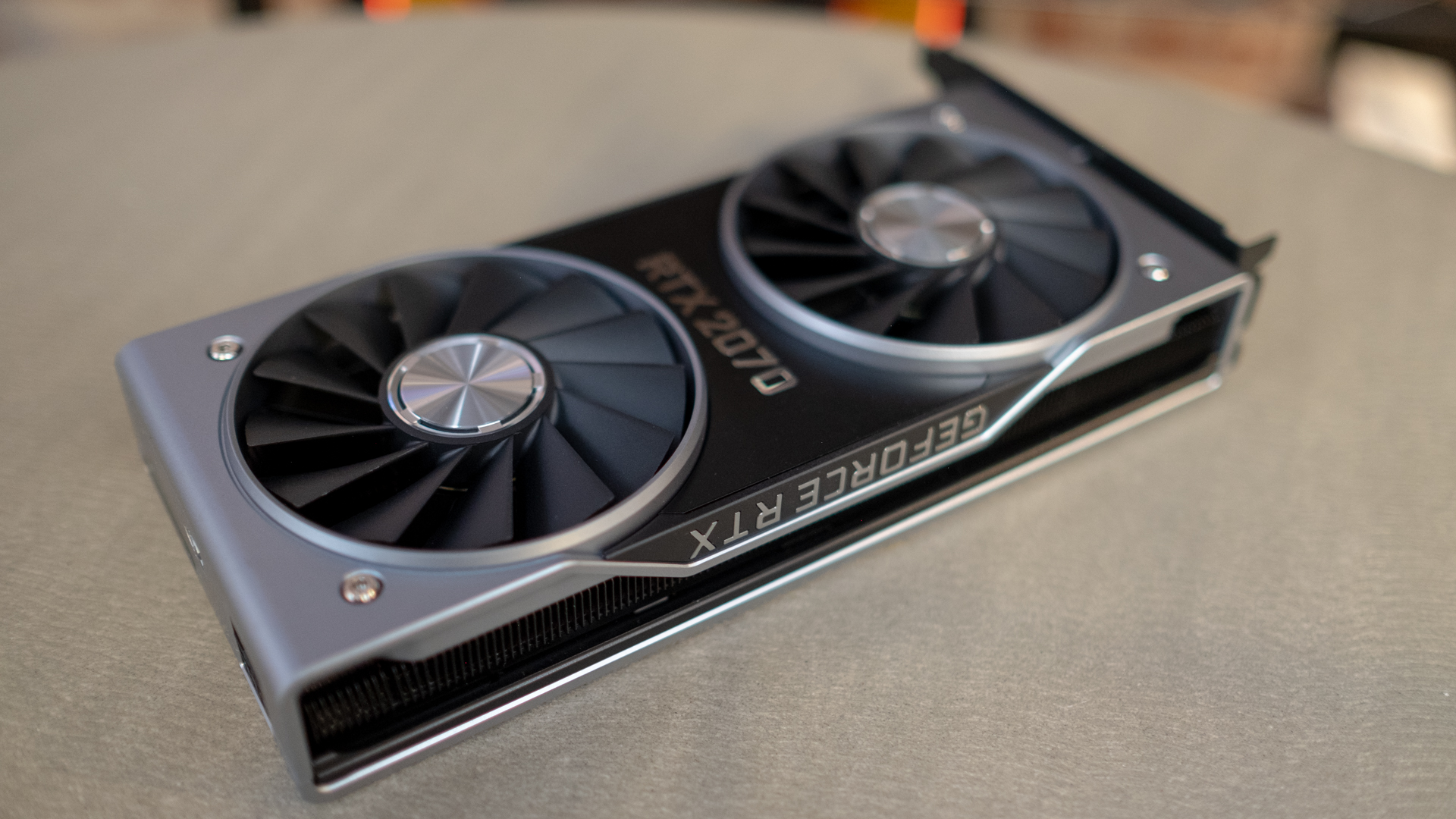
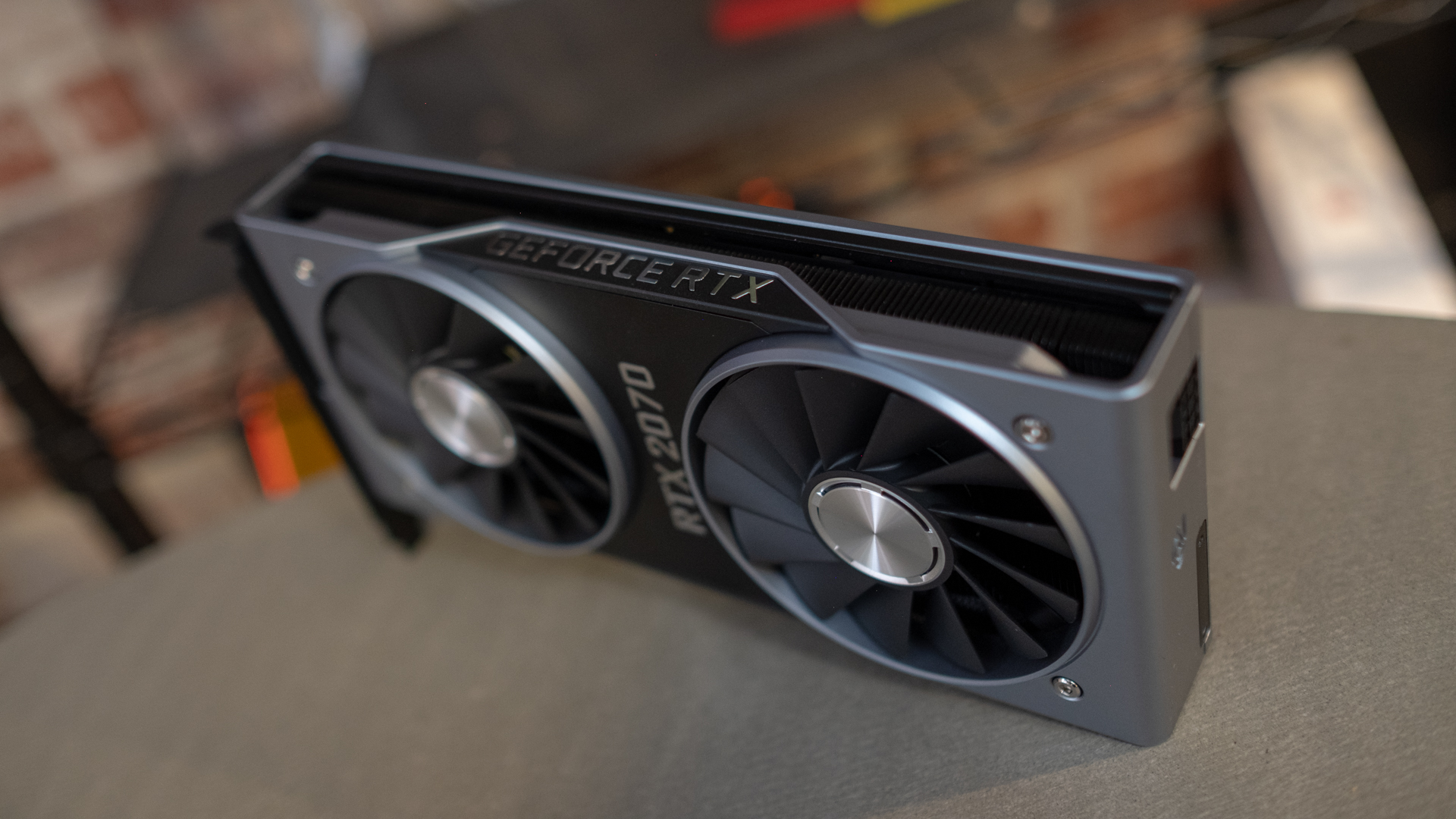
Price and availability
Much like the other Nvidia Turing graphics cards, the Nvidia RTX 2070 is much more expensive than the GTX 1070. The Nvidia GeForce RTX 2070 Founders Edition, costs a whopping $529 (about £420, AU$760).
Thankfully, you’ll find many third-party Nvidia RTX 2070 cards at a more palatable $499 (about £380, AU$690) price. Both of which are available to purchase now in the US and UK.
For reference, the Founders Edition version of the Nvidia GeForce GTX 1070 Ti and Nvidia Geforce GTX 1070 originally came priced at $449 (£419, AU$759) and $399 (£379, AU$699), respectively. Meanwhile, AMD’s closest equivalent cards are the $399 (about 320, AU$570) Radeon RX Vega 64 and $298 (about £240, AU$430) Radeon RX Vega 56.
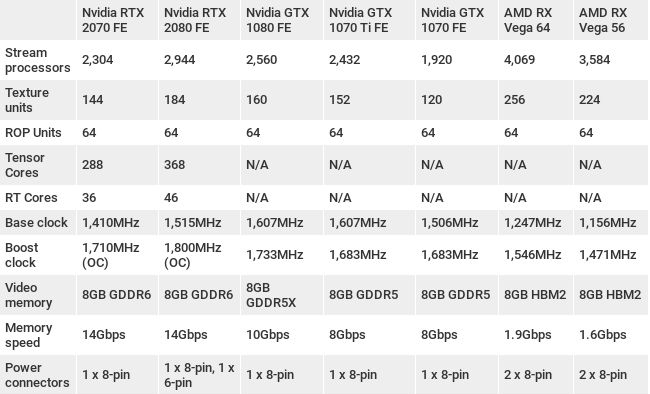
Features and chipset
The Nvidia RTX 2070 not only looks exciting because it’s the cheapest RTX graphics card you can buy currently. It also packs an impressive transistor count. Spec for spec, this GPU leapfrogs its direct predecessor, the GeForce GTX 1070, by boasting 20% more CUDA cores and 6Gbps faster GDDR6 video memory.
In comparison to the GeForce GTX 1070 Ti and GTX 1080, Nvidia’s new mid-range graphics card has a lower stream processor and texture unit count.
It also features significantly noticeably fewer Ray Tracing (RT) cores and AI-powered Tensor cores compared to the rest of the Nvidia Turing lineup. However, without any real-world ray tracing or deep learning super-sampling (DLSS) benchmarks at the time of the review, we didn’t yet know how well this GPU will handle Nvidia’s latest graphics technologies.
Another letdown is that the Nvidia RTX 2070 doesn’t support pairing multiple GPUs through SLI. Although Nvidia introduced a much higher bandwidth NVLink Bridge connector with Turing, the RTX 2070 doesn’t feature this new connector at all. If you’re looking to do a multi-GPU setup, you’ll have to plunk down more money on a higher-end graphics card from Nvidia.
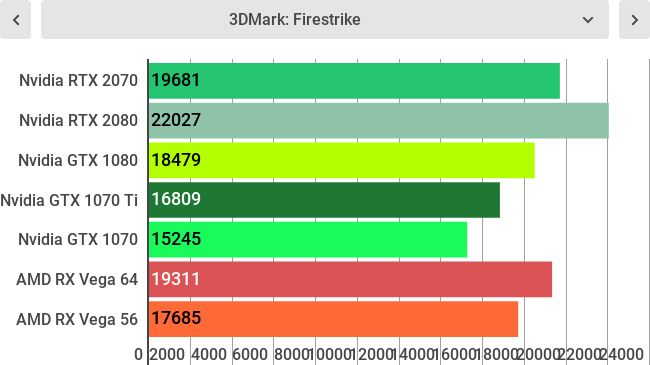
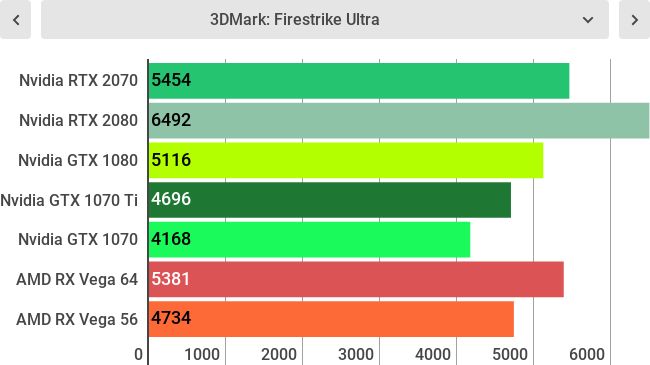
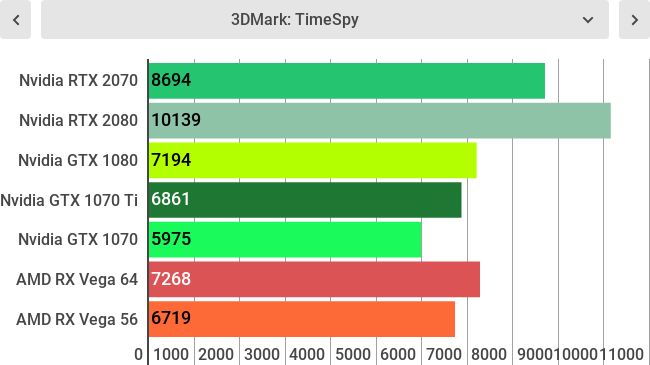
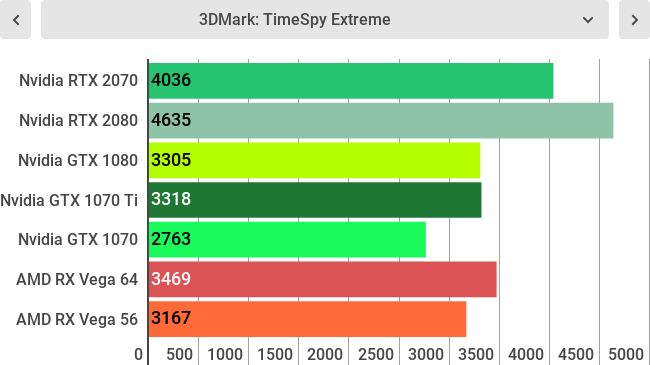
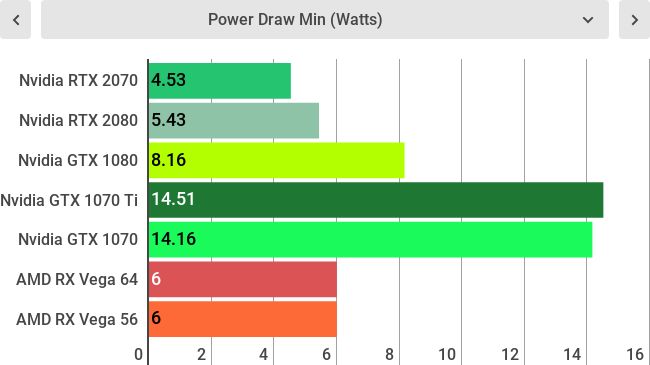
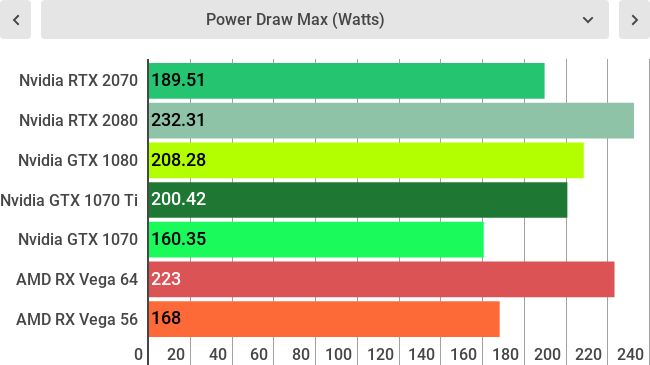
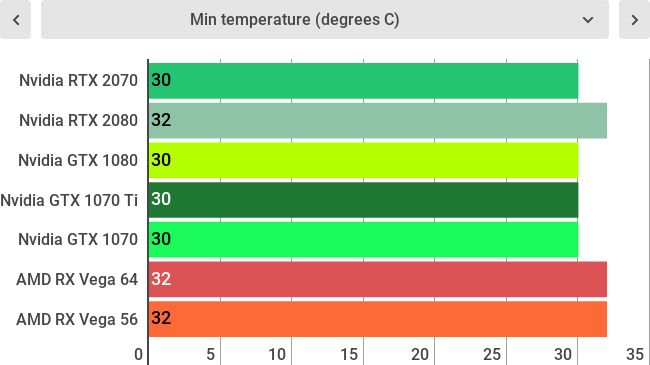
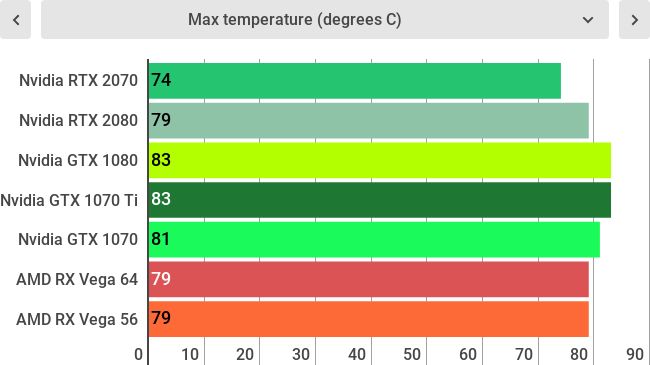
CPU: 3.7Ghz Intel Core i7-8700K (hexa-core, 12MB cache, up to 4.7GHz)
RAM: 32GB Vengeance LED DDR4 (3,200MHz)
Motherboard: Asus ROG Strix Z370-E Gaming
Power Supply: Corsiar RM850x
Storage: 512GB Samsung 960 Pro M.2 SSD (NVMe PCIe 3.0 x4)
Cooling: Thermaltake Floe Riing 360 TT Premium Edition
Case: Corsair Crystal Series 570X RGB
Operating system: Windows 10
Performance
Nvidia’s latest graphics cards have featured surprising performance in 4K gaming, but we weren’t expecting the Nvidia RTX 2070 to deliver here.
With our GeForce RTX 2070 test bench, we were able to play Strange Brigade and Forza Horizon 4 at a respectable 70 fps to 60 fps, respectively. Destiny 2 was the only game that really gave us any trouble, but frame rates remained in a playable 40 to 70 fps range.
Playing all the same titles at QHD (2,560 x 1,440) resolution kept frame rates hovering around 120fps. Lastly, FHD gaming with the RTX 2070 varied wildly between 120 to 220fps.
In our synthetic benchmarks, the Nvidia RTX 2070 blows past the GeForce GTX 1070, GTX 1070 TI and GTX 1080. Amazingly, the only thing to give Nvidia’s new mid-range GPU some competition – aside from the GeForce RTX 2080 – is the AMD Radeon Vega RX 64.
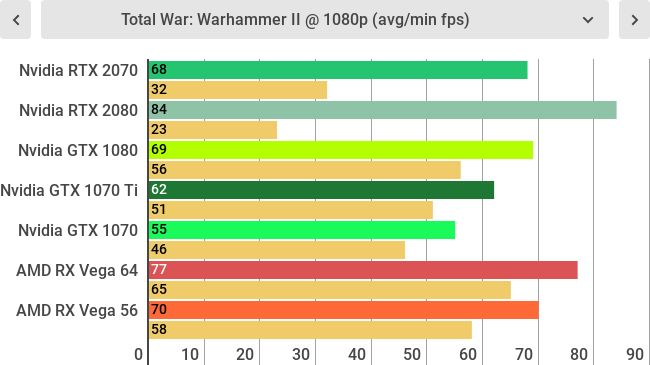
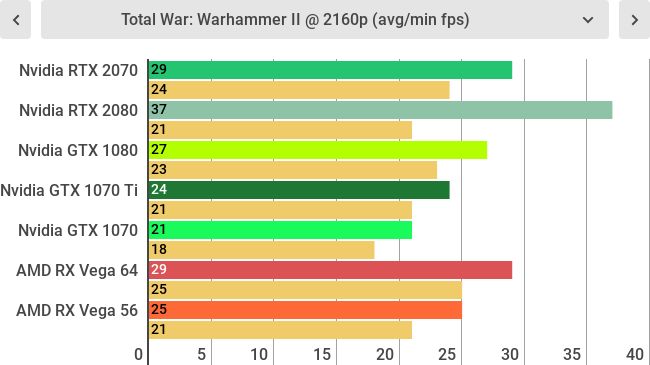
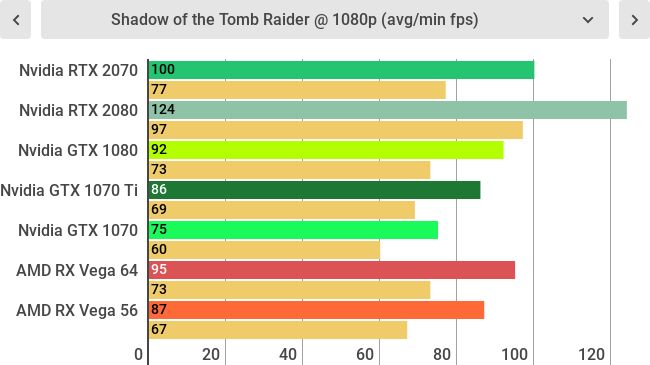
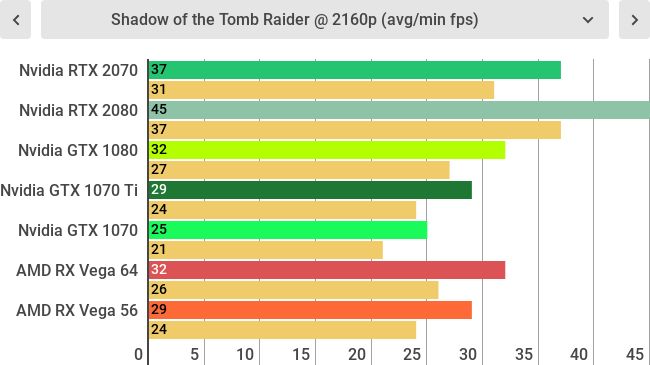
Unfortunately, gaming performance wasn’t quite as impressive. Even if the Nvidia RTX 2070 consistently delivers double digit frame rate increases over the GTX 1070 and GTX 1070 Ti, any other GPU above those – including the RX Vega 64 and Vega 56 – produce almost identical scores.
This is all a stark difference from the Nvidia GeForce RTX 2080 Ti and RTX 2080 that delivered such dramatic increases in performance to beat the Nvidia Titan XP. Both of Nvidia’s high-end Turing parts were desirable simply for being the most powerful GPUs.

Final verdict
The Nvidia RTX 2070 is an unquestionably impressive graphics card that puts 4K gaming within reach of a mid-range graphics cards. However, with a $499 (about £380, AU$690) price tag, it’s hard to call this GPU affordable, especially with this particular model we reviewed costing an even higher $599 (£569, AU$899) premium. The good news is that once the AMD Navi and Nvidia Super RTX hit the streets, these cards should drop in price.
Whether it’s a justifiable upgrade also depends on what graphics card you’re moving up from. Looking at all of our data, users with a Nvidia 1070 Ti or better won’t see a remarkable increase in frame rates after paying more for this GPU. At the same time, those holding onto AMD Vega graphics cards won’t have a reason to jump teams yet.
And once again, ray tracing and DLSS are the only unique features that the Nvidia RTX 2070 offers. If anything, there are more reasons to hold out on buying the Nvidia GeForce RTX 2070 for now.
First reviewed October 2018
Image credit: TechRadar
Kevin Lee was a former computing reporter at TechRadar. Kevin is now the SEO Updates Editor at IGN based in New York. He handles all of the best of tech buying guides while also dipping his hand in the entertainment and games evergreen content. Kevin has over eight years of experience in the tech and games publications with previous bylines at Polygon, PC World, and more. Outside of work, Kevin is major movie buff of cult and bad films. He also regularly plays flight & space sim and racing games. IRL he's a fan of archery, axe throwing, and board games.
